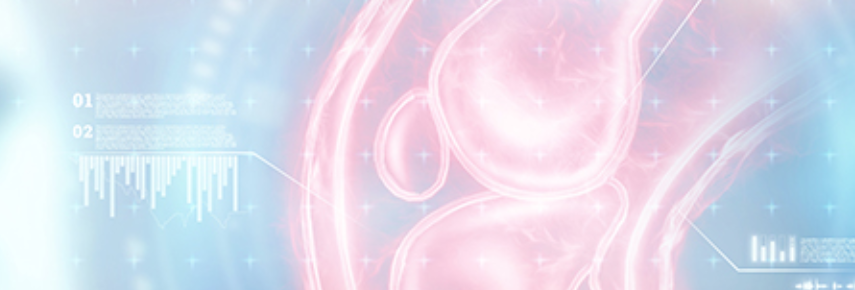David Nordlund, Sascha Kopic, Robert Jablonowski, Christos Xanthis, Sebastian Bidhult, Jonathan Berg, Mikael Kanski, Kelvin Chow, Anthony H Aletras, Håkan Arheden
求助PDF
{"title":"使用基于同位素参考的临床T1定位方法评估病理性ECV的验证。","authors":"David Nordlund, Sascha Kopic, Robert Jablonowski, Christos Xanthis, Sebastian Bidhult, Jonathan Berg, Mikael Kanski, Kelvin Chow, Anthony H Aletras, Håkan Arheden","doi":"10.1148/ryct.240441","DOIUrl":null,"url":null,"abstract":"<p><p>Purpose To verify the accuracy of clinically used cardiac MRI T1 mapping sequences for measuring extracellular volume fraction (ECV) throughout the spectrum of pathologic values using an independent reference standard. Materials and Methods Acute myocardial ischemia was induced in six pigs using endovascular balloon occlusion in the left anterior descending artery between October 2018 and November 2018. After 7 days of reperfusion, ECV was measured in vivo using four sequences: three modified Look-Locker inversion recovery (MOLLI) and one saturation recovery single-shot acquisition (SASHA) sequences. ECV was also measured using ex vivo SPECT following injection of technetium 99m diethylenetriamine pentaacetic acid. ECV was calculated for corresponding regions of interest of necrosis on cardiac MR and SPECT images and in myocardium remote from injury. Mixed model analysis was used to test for correlation, while the paired <i>t</i> test was used to test for differences in T1 and ECV. Results ECV measurements with all T1 mapping sequences showed high correlation to the reference standard (<i>r<sup>2</sup></i> range, 0.71-0.99). Measurements with MOLLI 5(3)3 and MOLLI 5s(3s)3s overestimated ECV in the infarct region compared with the reference standard (bias ± 2 SDs: 8.2% ± 8.5 and 4.9% ± 8.7; <i>P</i> = .005 and <i>P</i> = .04, respectively). All sequences showed overestimation of ECV in the remote region (range of bias, 3%-14% points, all MOLLI <i>P</i> values ≤ .001, SASHA <i>P</i> = .04). Conclusion This study verified the accuracy of clinically used T1 mapping sequences in measuring ECV in absolute values over a spectrum of pathologic values, using an independent radioisotope-based three-dimensionally acquired reference standard. <b>Keywords:</b> Animal Studies, MR Imaging, Cardiac, Edema, Imaging Sequences, Ischemia/Infarction <i>Supplemental material is available for this article.</i> © RSNA, 2025.</p>","PeriodicalId":21168,"journal":{"name":"Radiology. Cardiothoracic imaging","volume":"7 4","pages":"e240441"},"PeriodicalIF":4.2000,"publicationDate":"2025-08-01","publicationTypes":"Journal Article","fieldsOfStudy":null,"isOpenAccess":false,"openAccessPdf":"","citationCount":"0","resultStr":"{\"title\":\"Verification of Pathologic ECV Estimated with Clinical T1 Mapping Methods Using an Isotope-based Reference.\",\"authors\":\"David Nordlund, Sascha Kopic, Robert Jablonowski, Christos Xanthis, Sebastian Bidhult, Jonathan Berg, Mikael Kanski, Kelvin Chow, Anthony H Aletras, Håkan Arheden\",\"doi\":\"10.1148/ryct.240441\",\"DOIUrl\":null,\"url\":null,\"abstract\":\"<p><p>Purpose To verify the accuracy of clinically used cardiac MRI T1 mapping sequences for measuring extracellular volume fraction (ECV) throughout the spectrum of pathologic values using an independent reference standard. Materials and Methods Acute myocardial ischemia was induced in six pigs using endovascular balloon occlusion in the left anterior descending artery between October 2018 and November 2018. After 7 days of reperfusion, ECV was measured in vivo using four sequences: three modified Look-Locker inversion recovery (MOLLI) and one saturation recovery single-shot acquisition (SASHA) sequences. ECV was also measured using ex vivo SPECT following injection of technetium 99m diethylenetriamine pentaacetic acid. ECV was calculated for corresponding regions of interest of necrosis on cardiac MR and SPECT images and in myocardium remote from injury. Mixed model analysis was used to test for correlation, while the paired <i>t</i> test was used to test for differences in T1 and ECV. Results ECV measurements with all T1 mapping sequences showed high correlation to the reference standard (<i>r<sup>2</sup></i> range, 0.71-0.99). Measurements with MOLLI 5(3)3 and MOLLI 5s(3s)3s overestimated ECV in the infarct region compared with the reference standard (bias ± 2 SDs: 8.2% ± 8.5 and 4.9% ± 8.7; <i>P</i> = .005 and <i>P</i> = .04, respectively). All sequences showed overestimation of ECV in the remote region (range of bias, 3%-14% points, all MOLLI <i>P</i> values ≤ .001, SASHA <i>P</i> = .04). Conclusion This study verified the accuracy of clinically used T1 mapping sequences in measuring ECV in absolute values over a spectrum of pathologic values, using an independent radioisotope-based three-dimensionally acquired reference standard. <b>Keywords:</b> Animal Studies, MR Imaging, Cardiac, Edema, Imaging Sequences, Ischemia/Infarction <i>Supplemental material is available for this article.</i> © RSNA, 2025.</p>\",\"PeriodicalId\":21168,\"journal\":{\"name\":\"Radiology. Cardiothoracic imaging\",\"volume\":\"7 4\",\"pages\":\"e240441\"},\"PeriodicalIF\":4.2000,\"publicationDate\":\"2025-08-01\",\"publicationTypes\":\"Journal Article\",\"fieldsOfStudy\":null,\"isOpenAccess\":false,\"openAccessPdf\":\"\",\"citationCount\":\"0\",\"resultStr\":null,\"platform\":\"Semanticscholar\",\"paperid\":null,\"PeriodicalName\":\"Radiology. Cardiothoracic imaging\",\"FirstCategoryId\":\"1085\",\"ListUrlMain\":\"https://doi.org/10.1148/ryct.240441\",\"RegionNum\":0,\"RegionCategory\":null,\"ArticlePicture\":[],\"TitleCN\":null,\"AbstractTextCN\":null,\"PMCID\":null,\"EPubDate\":\"\",\"PubModel\":\"\",\"JCR\":\"Q1\",\"JCRName\":\"RADIOLOGY, NUCLEAR MEDICINE & MEDICAL IMAGING\",\"Score\":null,\"Total\":0}","platform":"Semanticscholar","paperid":null,"PeriodicalName":"Radiology. Cardiothoracic imaging","FirstCategoryId":"1085","ListUrlMain":"https://doi.org/10.1148/ryct.240441","RegionNum":0,"RegionCategory":null,"ArticlePicture":[],"TitleCN":null,"AbstractTextCN":null,"PMCID":null,"EPubDate":"","PubModel":"","JCR":"Q1","JCRName":"RADIOLOGY, NUCLEAR MEDICINE & MEDICAL IMAGING","Score":null,"Total":0}
引用次数: 0
引用
批量引用

 求助内容:
求助内容: 应助结果提醒方式:
应助结果提醒方式:


